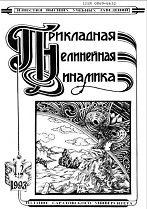|
This article is cited in 4 scientific papers (total in 4 papers)
NONLINEAR DYNAMICS AND NEUROSCIENCE
Ring generator of neuron-like activity with tunable frequency
N. M. Egorovab, M. V. Sysoevaab, V. I. Ponomarenkoac, M. V. Kornilovac, I. V. Sysoevac
a Saratov Brunch of Kotelnikov Institute of Radioengineering and Electronics of the RAS, Russia
b Yuri Gagarin State Technical University of Saratov, Russia
c Saratov State University, Russia
Abstract:
The aim of the work is to build a radiophysical generator of neuron-like activity with a frequency tunable in various ways, corresponding to modern ideas about the structure of the hippocampus and the generation of pathological epileptic rhythms in it. Methods. The elements of the generator are radio engineering implementations of the complete FitzHugh-Nagumo neuron and the electronic implementation of a chemical synapse in the form of a sigmoid function with a delayed argument. The simulation was carried out in the SPICE simulator. Results. Various ways of introducing delay into the coupling are considered: an ideal delay line, a phase filter with a rheostat, one tunable Bessel filter, and a sequence of non-tunable Bessel filters. For circuit implementation, the approach using a Bessel filter with a rheostat is recognized as optimal as a compromise between simplicity and minimization of signal distortion. The dependences of the oscillation frequency on the number of elements in the ring and the delay time are constructed. The bistability of generation regimes is studied for certain values of the parameters. The effect of inclusion of inhibitory elements (interneurons) in the circuit is considered. Conclusion. The constructed ring generator models the experimentally observed properties of the dynamics of epileptic discharge fundamental frequency in limbic epilepsy. It is able to reproduce the occurrence of oscillations as a result of external short-term driving, smooth and sharp frequency tuning, the coexistence of different modes with the same parameters.
Keywords:
FitzHugh-Nagumo neuron electronic circuit, neural network, time delayed systems, sigmoid coupling.
Received: 12.10.2022
Citation:
N. M. Egorov, M. V. Sysoeva, V. I. Ponomarenko, M. V. Kornilov, I. V. Sysoev, “Ring generator of neuron-like activity with tunable frequency”, Izvestiya VUZ. Applied Nonlinear Dynamics, 31:1 (2023), 103–120
Linking options:
https://www.mathnet.ru/eng/ivp520 https://www.mathnet.ru/eng/ivp/v31/i1/p103
|

| Statistics & downloads: |
| Abstract page: | 44 | | Full-text PDF : | 18 | | References: | 11 |
|




 Contact us:
Contact us: Terms of Use
Terms of Use
 Registration to the website
Registration to the website Logotypes
Logotypes







 Citation in format
Citation in format 
